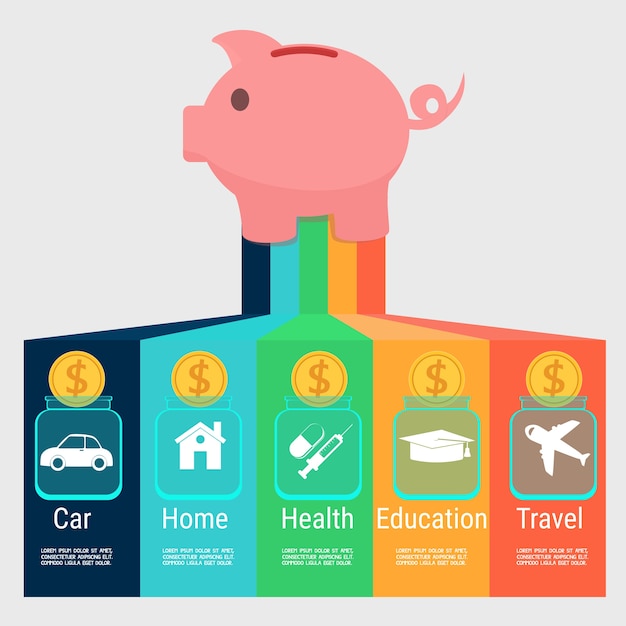Understanding the 2025 IRS Tax Brackets: A Complete Guide

Understanding the New IRS Tax Brackets for 2025: A Guide for Maximizing Your Returns, provides a detailed analysis of the upcoming changes in tax brackets, offering strategies to optimize your tax returns and navigate the updated tax landscape effectively.
Navigating the complexities of tax season can feel overwhelming. With the ever-changing landscape of tax laws, it’s crucial to stay informed. Understanding the New IRS Tax Brackets for 2025: A Guide for Maximizing Your Returns, will help you to empower you to make informed decisions and potentially lower your tax bill.
Understanding the 2025 Federal Income Tax Brackets
The federal income tax system in the United States is progressive, meaning that as your income increases, you move into higher tax brackets and pay a higher percentage of your income in taxes. Each year, the IRS adjusts these tax brackets to account for inflation. Understanding these adjustments for 2025 is crucial for effective tax planning.
Key Changes to Tax Brackets for 2025
Several economic factors influence the annual adjustments to the tax brackets. Inflation, as measured by the Consumer Price Index (CPI), plays a significant role in determining these changes. Any projections of changes are based on existing legislation; future tax laws have the potential to alter the landscape. It is extremely important to stay current in late 2024 and throughout 2025, as the official determinations are made.
Some of the most significant potential shifts to the tax brackets include increases to income thresholds, meaning that you may be able to earn more money before moving to a higher tax bracket. These shifts are intended to prevent “bracket creep,” where inflation pushes taxpayers into higher brackets even if their real income remains the same.
- Impact of Inflation on Tax Brackets
- Adjustments to Income Thresholds
- Understanding Progressive Taxation
Staying informed about these potential changes is essential for accurately estimating your tax liability and making informed financial decisions throughout the year.
In plain terms, the federal income tax brackets help decide the amount in taxes you owe to the IRS based on your taxable income for that year. Keeping abreast of the latest adjustments keeps you aware of where you stand with tax payments.

How Tax Brackets Affect Your Tax Liability
Tax brackets determine the rate at which your income is taxed. However, it’s important to understand that you don’t pay the same tax rate on all of your income. Instead, your income is taxed at different rates depending on which tax bracket it falls into. Understanding how this system works impacts how you view your financial situation.
Marginal Tax Rate vs. Effective Tax Rate
The marginal tax rate is the rate you pay on the last dollar of your income. For example, if you are in the 22% tax bracket, you will pay 22 cents in taxes for every additional dollar you earn within that bracket. The effective tax rate, on the other hand, is the total tax you pay as a percentage of your total income. It is usually lower than your marginal tax rate because it takes into account the progressive nature of the tax system.
When trying to calculate your potential tax liability, it’s often more useful to estimate based on your effective, rather than marginal, tax rate. This is because this rate will be a more accurate reflection of your actual tax obligation to the IRS for that tax year.
- Calculating Your Marginal Tax Rate
- Understanding Effective Tax Rate
- Impact of Deductions and Credits
Considering these differing calculations will help you keep abreast of your potential tax liability, giving you time to adjust your finances and take the necessary steps to maximize your refund or minimize your tax obligations.
Strategies for Maximizing Your Tax Returns in 2025
Now that you understand how tax brackets work, it’s time to explore strategies for minimizing your tax liability and maximizing your tax returns. There are several legal and ethical ways to reduce your taxable income and take advantage of tax benefits, so investigating and implementing these strategies can save you money.
Tax-Advantaged Retirement Accounts
Contributing to tax-advantaged retirement accounts, such as 401(k)s and IRAs, allows you to reduce your taxable income while saving for retirement. Traditional 401(k) and IRA contributions are typically tax-deductible, meaning they lower your current taxable income. Roth 401(k)s and Roth IRAs, on the other hand, don’t provide an upfront tax deduction, but qualified withdrawals in retirement are tax-free.
Another potential retirement advantage of this kind of arrangement is the ability to defer paying taxes on capital gains. By sheltering these kinds of investments in IRA and 401(k) accounts, you can defer any payments until you make withdrawals. It’s important to keep abreast of the contribution rules for these plans, and it can be extremely useful to consult with a tax professional for personalized assistance.
- Traditional vs. Roth Contributions
- Contribution Limits and Deadlines
- Tax Benefits in Retirement
When it comes to maximizing your tax returns in 2025, it pays to think about the future. Utilizing tax-advantaged retirement accounts are a great way to prepare for later in life while taking some of the tax sting out of the current year.

Leveraging Tax Deductions and Credits
Tax deductions and credits can significantly reduce your tax liability. Deductions lower your taxable income, while credits reduce the amount of tax you owe. Common deductions include those for student loan interest, medical expenses, and charitable donations. Tax credits include the Child Tax Credit, the Earned Income Tax Credit, and education credits.
Common Tax Deductions and Credits
One of the best ways to get the most from tax credits and deductions is to make sure you’re organized with your tax documents. Maintaining accurate and thorough records of expenses that could qualify as a deduction is a crucial part of filing an accurate return. Common areas where people can get benefits include charitable donations, business expenses, medical expenses, and dependent care expenses.
It is important to keep in mind that some deductions and credits have income limitations, meaning that they are only available to taxpayers with income below a certain threshold. Some deductions are also “above-the-line”, meaning you can take them even if you don’t itemize. Consulting with a professional tax preparer is often an effective way to take an inventory of your potential qualifications and the overall financial picture.
Tax credits are typically more valuable than tax deductions, as they directly reduce the amount of tax you owe, rather than simply reducing your taxable income.
- Itemized vs. Standard Deductions
- Eligibility Requirements for Credits
- Maximizing Charitable Contributions
When it comes to deductions and credits, knowing the limitations and qualifications are keys to maximizing your tax refund, so take your time and do your research before preparing your filing.
Tax Planning Throughout the Year
Smart tax planning isn’t something that should only happen during tax season. Because strategies like 401(k) contributions are a process throughout the year, it stands to reason that tax planning should follow suit. Proactive year-round financial strategies can help you stay on top of your obligations and maximize benefits to the fullest extent.
Adjusting Your Withholding
One essential aspect of year-round tax planning is ensuring that your withholding is accurate. You can adjust your W-4 form with your employer to reflect changes in your income, deductions, and credits throughout the year. Doing so can help you avoid surprises when you file your tax return.
The IRS also provides online tools to help you estimate your tax liability and determine whether you need to adjust your withholding. One of these tools is the IRS Withholding Estimator, which can help you take a deeper dive into your tax situation and consider changes that impact your taxes.
By planning ahead and adjusting your withholding as needed, you can optimize your tax outcome and minimize the risk of owing taxes at the end of the year.
- Reviewing Your W-4 Form
- Using the IRS Withholding Estimator
- Avoiding Underpayment Penalties
Being diligent about your plan at the beginning of the year, and maintaining awareness along the way, will prepare you to be calm and confident when it comes time to file your taxes.
Seeking Professional Tax Advice
While this guide provides general information about understanding the new IRS tax brackets for 2025: a guide for maximizing your returns, it’s essential to seek personalized advice from a qualified tax professional. Tax laws can be complex and vary depending on your individual circumstances.
When to Consult a Tax Advisor
A tax advisor can help you navigate complex tax situations, identify potential tax-saving opportunities, and ensure that you are compliant with all applicable tax laws. They will be keenly aware of any IRS rule changes that might have happened during the tax year. Consulting with a professional is especially important if you have significant investment income, own a business, or have undergone major life changes such as marriage, divorce, or the birth of a child.
When you decide to consult a tax advisor, it is important to seek out one with the correct credentials, and a trustworthy reputation. You will be sharing highly personal financial information with this person, so it is also essential that you feel comfortable and secure.
- Finding a Qualified Tax Professional
- Preparing for Your Consultation
- Ongoing Tax Planning Support
Remember, expert professional tax advice is about more than just filing your taxes. It’s about planning for the future and working to maximize your total wealth, which makes it important to find an advisor you can trust and depend on for years into the future.
| Key Point | Brief Description |
|---|---|
| 💰 2025 Tax Brackets | Understanding the new income thresholds and tax rates. |
| 📈 Retirement Accounts | Maximize contributions to tax-advantaged retirement accounts. |
| 🧾 Deductions & Credits | Leverage available tax deductions and credits to reduce liability. |
| 👨💼 Professional Advice | Seek expert tax advice tailored to your financial situation. |
Frequently Asked Questions
▼
The IRS adjusts tax brackets annually based on inflation, primarily using the Consumer Price Index (CPI). These adjustments aim to prevent “bracket creep,” where inflation pushes taxpayers into higher brackets even without real income gains.
▼
Tax brackets determine the rate at which different portions of your income are taxed. You only pay the higher rate on the income that falls within that specific bracket, not on your entire income.
▼
Strategies include contributing to tax-advantaged retirement accounts, such as 401(k)s and IRAs, and leveraging tax deductions and credits, such as those for student loan interest, medical expenses, and charitable donations.
▼
Year-round tax planning allows you to adjust your withholding and make proactive financial decisions that can optimize your tax outcome. It helps avoid surprises and ensures that you’re taking full advantage of available tax benefits.
▼
Consulting a tax advisor is advisable if you have complex tax situations, significant investment income, own a business, or have experienced major life changes. A tax advisor can provide personalized guidance and ensure compliance.
Conclusion
Staying informed about tax law changes, such as understanding the new IRS tax brackets for 2025: a guide for maximizing your returns, is crucial for making sound financial decisions and maximizing your tax returns. By understanding how tax brackets work and implementing effective tax-planning strategies, you can navigate the complexities of the tax system with confidence and potentially reduce your tax liabilities.
